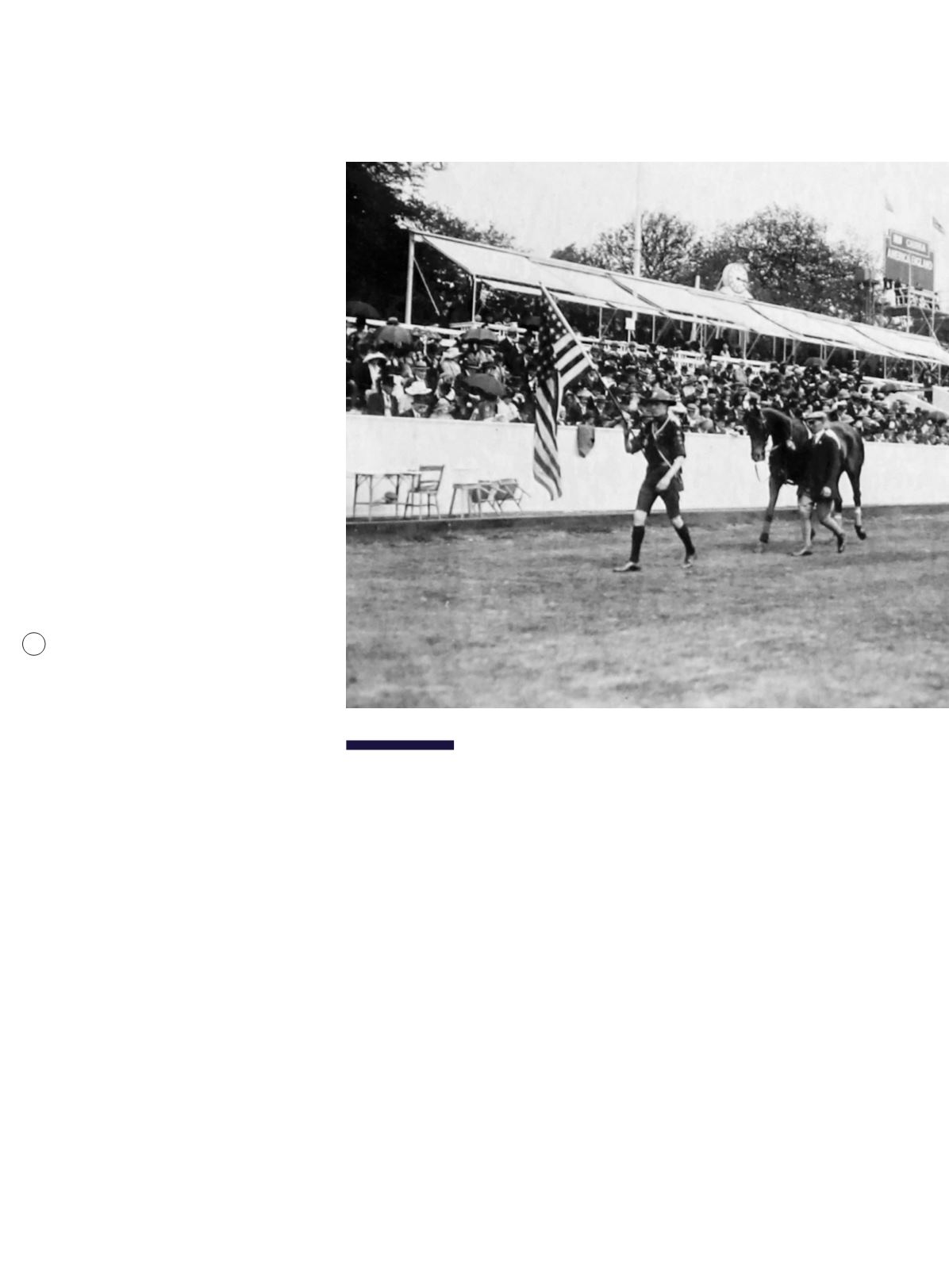
T H E 1 9 2 1 I N T E R N AT I O N A L C U P
C H A L L E N G E U S H E R E D I N A G O L D E N A G E
‘Three o’clock had struck,’ said
The New York
Times
, ‘and the Guards Band moving as one
man marched to the centre of the ground,
and whirling round, faced the royal box. The
shrill cheer of the children sounded from
the road outside and the royal procession
arrived… as the Royal Standard was hoisted
and the bands played British and American
national anthems while the spectators
stood. Both teams were presented to the
King and Queen.’
Hurlingham was awash with royalty and
the social elite. The next two British monarchs
were in the royal box, the Prince of Wales and
Duke of York, joined by polo aficionado King
Alfonso of Spain, Queen Mother Alexandra
and dignitaries including Winston and Mrs
Churchill. The American ambassador was
their guest. It was a sight to behold.
Two Union Jacks and two Star-Spangled
Banners danced in the wind as the band,
dressed to the nines in the pre-war uniforms,
sent the crowd aroar. The first chukka had
yet to commence, but triumph was in the air
at Hurlingham.
The match was one of the great
internationals in history. The play was frantic
– the Americans dictated the pace, using
speed to outgun the Brits’ more genteel style
of play. With Milburn far from peak form,
Webb played the best game of his life. He
was the best player on the field that day by
all accounts, stymying the great tactician
Lord Wodehouse at every turn and led the
American attack with five goals.
In a cartoon, the
Daily Mail
quipped:
‘Webb, the American giant who scored
five goals and accidentally started the
Cup rocking on our sideboard.’
This also marked the debut of the great
Hitchcock, who was playing in his first
international and had returned to Europe
on the polo pitch after leaving school at 17 to
fly with the famed Lafayette Escadrille during
the war. Riding number two, he scored four
times, marking the beginning of possibly the
greatest run of high-goal polo ever.
Said Pulitzer’s
New York World
European
edition after the first match: ‘Eleven to Four.
This tells the tale. Before one of the most
distinguished galleries that ever witnessed
a sporting event, the Americans made
sporting history… before two kings and two
queens and about a dozen princes and
princesses and all the world’s great
horseman raised the Star-Spangled Banner
in the greatest triumph polo has ever seen.’
The second match was closer, but Britain
never held a lead. The States jumped out
to a 2-0 lead after the first chukka. Despite
a valiant effort by the British to get within
one goal, Watson, Webb and Hitchcock
scored goals in the final chukka to put
the match away. This time Stoddard,
the future USPA president who was on the
last winning team with Milburn in 1913, led
the way with four goals while playing in his
last international, with Webb adding three.
The Americans had captured the coveted
Westchester Cup.
The 1921 International Cup Challenge
ushered in another golden age of polo
on both sides of the pond, with matches
routinely drawing upwards of 30,000
fans. Lord Wodehouse, who wrote the
foreword to the Earl Mountbatten’s book,
Introduction to Polo
, was tasked with trying
to form a foursome who could compete
with the American four. Though the British
were noble adversaries, America would
hold onto the illustrious Westchester Trophy
until the tradition of the International Cup
Challenge fell victim to another world war
hurlinghampolo.com
42


